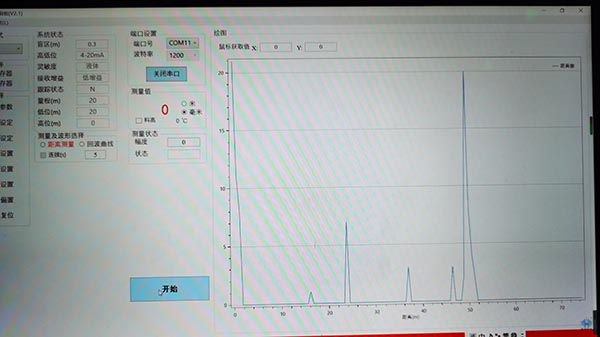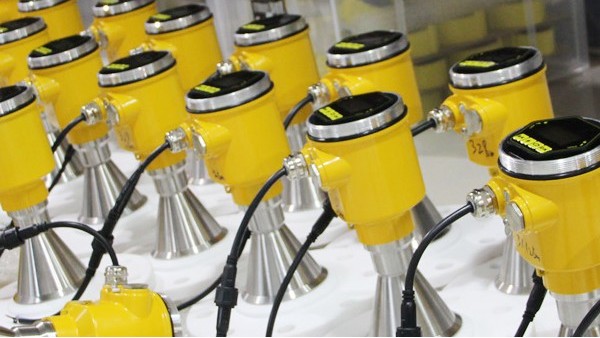The radar level meter completes the level measurement in three main steps, i.e. transmitting radar waves, reflecting radar waves and receiving radar waves. Of these three steps, the first and third steps are completed by the radar level meter itself, so the quality of the signal during the transmitting and receiving process is directly dependent on the technology of the radar level.
The second step is completed by the surface of the liquid medium, and the quality of the return wave is very much related to the process of reflecting radar waves from the liquid medium.

In this process, there are too many interfering factors and the echo signal will be weak or even non-existent. Conversely, the echo signal is very strong and the measurement is very accurate
So, to solve the data jumps that occur with radar level meters, three steps need to be done.
The first is to enhance the reflection of the signal by increasing the transmitting frequency.
An experiment was carried out using a radar level meter with a 30M range transmitting power at a height of 10 meters to measure the level of water with no fluctuations, water with large waves, and water with floating objects. It was found that there was a good reflection signal from the non-fluctuating water surface, but that there was a jump in the data from the large wave and floating water surfaces. As a result, the transmitting power was increased to the 70M range and the measurements were taken again and the water surface no longer showed jumps in all cases.
From this experiment, it can be seen that increasing the transmitting conditions can reduce the probability of data jumps to a certain extent.

Secondly, the radar level meter is guaranteed to be stable at all times by switching to a constant power supply.
Thirdly, the data jumps are filtered out by a number of mean measurements.
The above three steps are all steps to solve the problem of data jumping from the radar level meter itself. In fact, data jumps in radar level meters can also be solved by shielding the source of interference and enhancing the reflected signal.
